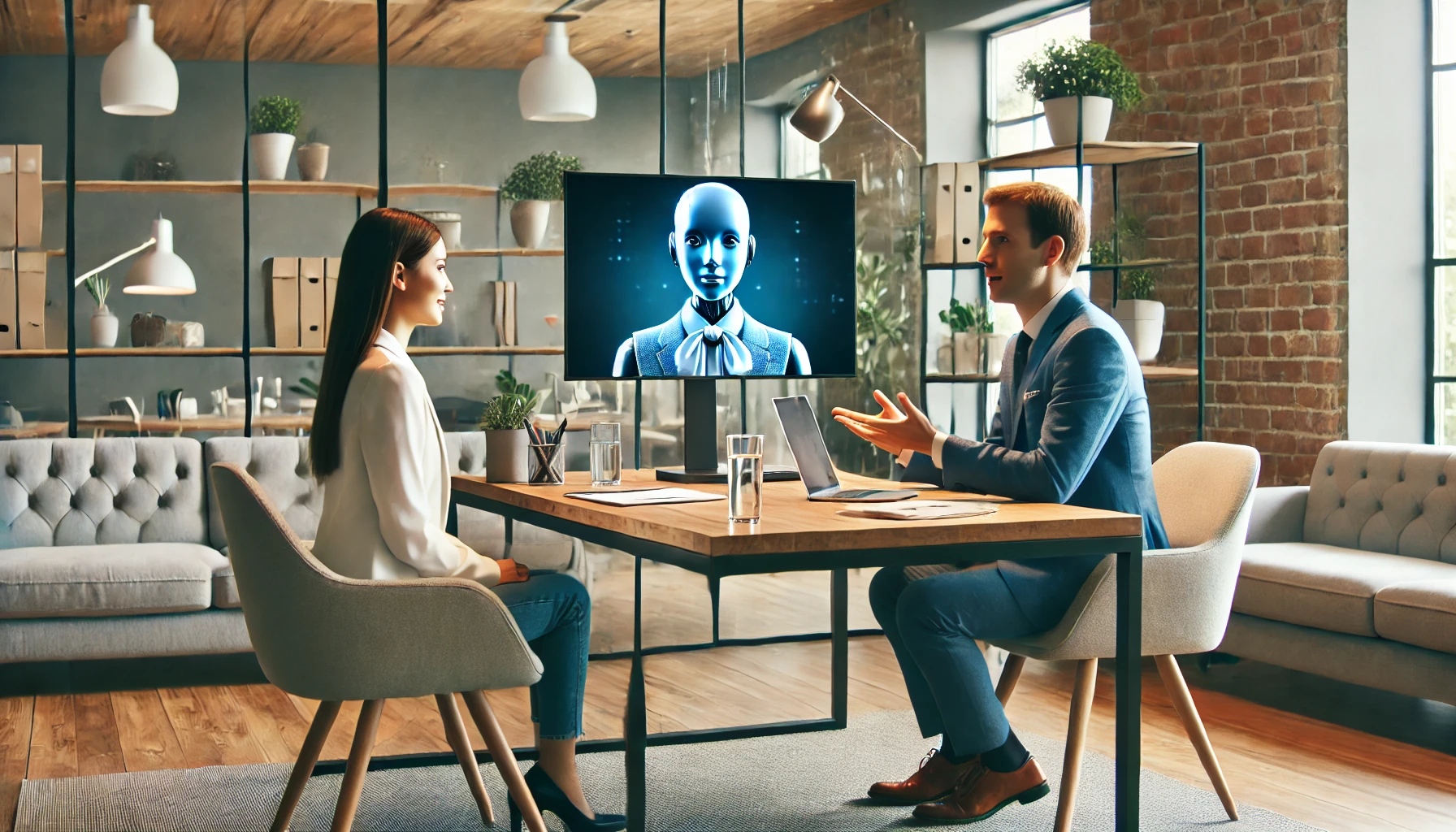These are people who, for one reason or another, are not actively searching for a new job but may consider a new opportunity if it meets their needs and wants. They do not seek employment or respond to employment vacancies, but they might be willing to relocate if provided with a good opportunity.
As revealed in the LinkedIn Global Talent Trends Report, about 70% of global employees can be considered passive candidates. Targeting these candidates helps companies to source talent from a larger pool and in most cases, with a higher professional level.
Passive candidates are not as active in their search for employment opportunities hence the competition from other employers is normally low. This is especially beneficial to organizations that wish to hire the best talents before they start searching for jobs actively.
It is less costly to engage passive candidates because it helps organizations to make proactive hires in contrast to when the candidates approach you, in most instances, you are forced to hire them. This way, companies are always developing a pool of candidates for potential employment when such crucial positions are vacant.
A SHRM survey revealed that passive candidates are likely to remain longer in their new positions than active seekers of employment. This is because they would have given much thought to the move and made sure that it was in the best interest of their career.
Passive candidates possess fresh thinking and unique experiences that can be an added advantage for the firm’s competitiveness. In this way, companies can maintain relationships with various levels of talent and continuously enhance the diversity of workplaces.
To be able to construct a strong and sustainable passive talent pool, companies need to approach such candidates strategically. Thus, the use of AI for candidate sourcing and screening allows organizations to detect, target, and develop these prospective candidates for the benefit of the company’s long-term sustainability and enhanced position in the talent marketplace.
Try PreScreen AI for Free
Don’t miss out on the opportunity to experience all the benefits of AI-powered interviews firsthand – try our free trial today.
How AI Identifies Passive Candidates
Analyzing Social Media
With the help of AI, the identification of passive candidates through the analysis of social networks and their activity has become possible. These tools use machine learning algorithms, and natural language processing (NLP) to search for potential candidates on various platforms such as LinkedIn, Twitter, and Facebook.
Profile Analysis
AI algorithms can scan and analyze profile details such as job titles, skills, endorsements, and professional experiences. For instance, LinkedIn’s Talent Insights uses AI to provide deep insights into potential candidates by analyzing their professional profiles and helping recruiters identify individuals who match specific job criteria.
Activity Monitoring
In social media, AI tools track posts, comments, and likes from users to identify their concern level in relevant industry topics and possibly receptiveness to new opportunities. For instance, if a professional often shares or comments on materials about professional growth or shifts in the field, it may mean seeking new opportunities.
Sentiment Analysis
Machine learning algorithms can analyze the content of interactions through social media to determine candidates’ feelings and level of satisfaction with the existing positions. This can aid in finding out a professional potentially willing to change their job due to job dissatisfaction or career advancement.

Mining Online Professional Networks
LinkedIn and other such online professional networking platforms are treasure troves when it comes to passive candidate sourcing. The application of artificial intelligence in these networks is through data mining methods that help to discover useful information.
Network Analysis
AI can also chart out the connections to the professional world to find out the most influential people in the given subject or potential candidates who are normally not actively looking for new jobs. For example, LinkedIn Recruiter integrates the use of artificial intelligence in recommending suitable candidates based on connections.
Skill and Endorsement Extraction
AI methods can parse the skills and endorsements mentioned in a professional’s resume to compare the candidate with a job offer. This is useful in the process of screening for individuals with the right skills and experience, including those who are unemployed.
The analysis of profiles on LinkedIn shows that the members with 5 or more skills receive up to 17 times more profile views proving the relevance of skills data for candidate evaluation.
Job Change Indicators
It is possible for AI tools to look for less evident signs that might indicate a candidate is planning on changing their employer. Such indicators are the last profile updates, the increase in the activity on professional platforms, or interactions with the content related to the job search. Such tools as Entelo Sonar can predict candidates who possess such behaviors by using predictive analysis.
Utilizing Big Data and Pattern Recognition
AI strategies in recruitment revolve around big data analysis and identification of patterns. AI tools can then leverage big data to make an analysis that reveals passive candidates who may be willing to change employers.
Data Aggregation
AI systems collect data from various sources like social networking sites, professional networking sites, job portals, and company websites to build a candidate profile. This comprehensive approach ensures that recruiters are able to pick passive candidates based on numerous factors.
A report by Deloitte reveals that 67% of hiring managers and recruiters are of the opinion that AI has enhanced efficiency in the recruitment process by offering improved candidate data.
Behavioral Patterns
Through behavioral analysis, AI is capable of determining the candidate’s preparedness to transition to a new job. For instance, accessing work-related sites more often or a spike in the number of skills being promoted can be signs that the candidate might be interested in other positions. Applications such as HireVue Insights employ machine learning to predict candidate behavior and organizational fit.
Predictive Analytics
Predictive analytics models involve the use of previous data to determine future patterns and/or actions. AI can determine which passive candidates might be a good match for the position and would be willing to accept an offer based on historical hiring records.
Research done by the National Bureau of Economic Research showed that predictive analytics can enhance hiring results by 15-20%, and this shows its viability.
Try PreScreen AI for Free
Don’t miss out on the opportunity to experience all the benefits of AI-powered interviews firsthand – try our free trial today.
Building Relationships with Passive Candidates through AI
Personalized Communication and Engagement
The AI technology allows recruiters to use communication and engagement in the right way with passive candidates to touch base with them meaningfully. It is particularly important in engaging the passive talent who may not be actively looking for the next job opportunity and hence require persuasion.
Tailored Messaging
AI can also parse information from the profiles of the candidates, their interests, competencies, and career histories to compose specific messages. This in turn leads to higher engagement rates since candidates are receiving messages that relate to their persona and career goals. As revealed by a study conducted by ERE Media, marketing emails are more effective when they are customized to be 29% more effective regarding the open rates and 41% more effective concerning the click-through rate.
Automated Follow-ups
Social recruiting strategies can be created and managed by AI recruitment platforms to send follow-up messages to candidates depending on their interactions and replies. For instance, if a candidate interacts with a company post or opens an email, it can send an automatic but personal follow-up message. According to a study from Campaign Monitor, follow-up emails that are automated can produce a 70 percent open rate. It has been reported that such promotional messages have 5% more chances of being opened by the recipient and a 152% higher click-through rate than normal marketing emails.
Contextual Engagement
AI can be used to identify the most effective timing and channels for reaching passive candidates to recruiters. For example, if a candidate spends a lot of time on links or posts content related to his or her industry, the recruiter can use this information to contact the candidate at the right time. LinkedIn’s study revealed that the recruiters who implement data-driven strategies to determine when to approach a candidate get a 30% higher candidate response rate.
Try PreScreen AI for Free
Don’t miss out on the opportunity to experience all the benefits of AI-powered interviews firsthand – try our free trial today.
How to Use Conversational AI Bots to Hold Personalized Interviews with Passive Candidates

AI interview bots like PreScreen AI provides an efficient way of screening passive candidates at scale, where the bot develops interview scripts based on the candidate’s CV and the job description. With this technology, the candidate receives a properly tailored interview conducted at his preferred time.
How PreScreen AI Streamlines the Interview Process
CV and Job Description Analysis PreScreen AI carefully scans through the candidate’s CV and the details of the job opening to identify key parameters such as experience, skill set, educational background, and accomplishments. In this case, the bot cross-checks the data collected with the job description so that it can see which areas are most appropriate for further questioning during the interview.
Tailored Interview Scripts Based on its analysis, PreScreen AI generates a customized interview script. For example, if a candidate has extensive project management experience, the bot might ask about their largest projects, the challenges they faced, and the strategies they used. This ensures that the interview is relevant and insightful.
Objective Clarification Interviewers may have specific goals that they want to achieve during the interview like confirming certain competencies, evaluating conformity to organizational culture or other relevant concerns. This way, PreScreen AI makes certain that the above goals are met by integrating appropriate questions into the script.
Explore the Powerful Features of PreScreen AI
Voice/Chat AI Bot for Pre-Qualifying Candidates
PreScreen AI allows voice and/or chat options for the first round of interviews. This conversational AI chatbot optimizes the tasks of the HR department, reduces time spent on recruitment, and enables the selection of more suitable candidates.
Custom Interview Duration
Adapt the length of each interview to suit your needs. PreScreen AI adjusts the conversation flow to fit the set timeframe while maintaining thoroughness and accuracy.
Candidate Experience Detailing
PreScreen AI ensures comprehensive coverage of critical aspects of a candidate’s experience, such as technical skills, project tasks, and challenges. This thorough evaluation helps identify the most qualified candidates for further consideration.
Tech and Soft Skills Evaluation
PreScreen AI is an intelligent algorithm that evaluates both the hard and soft skills of individuals with the help of sentiment analysis. This feature is used to gather all the necessary details for making the right hiring decisions and to identify the right candidate for your team.
Candidate Profile Extension
PreScreen AI ensures no vital information is missed, even if it is not reflected in the CV. The profile management feature allows for building comprehensive candidate profiles during the interview, capturing all relevant details.
Interview Summarization
Lastly, PreScreen AI presents the applicant’s summary of qualifications and the overall score that determines their compatibility with the position. It thus enables the user to make quick and informed decisions whenever he or she is making a decision.
Through its advanced features, PreScreen AI transforms the traditional recruitment approach by making it faster, more engaging, and more effective in producing the highest quality candidates.
Final Thoughts
Incorporating AI in the recruitment process, especially through conversational AI bots like PreScreen AI is a step up from how organizations can engage and interview passive candidates. Through the ability of AI to read through the CVs of the candidates, the ability to match the job requirements, and the creation of interview scripts, recruiters can foster relationships with great talents who may not be on the market for jobs.
Enhanced Efficiency and Precision
Technological tools, in this case, are advanced in a way that they help the recruiters do their work effectively without having to spend most of their time on paperwork. This not only saves time but also ensures a better fit of the candidates to the jobs as it reduces errors.
Personalized Candidate Experience
Passive candidates get a chance to engage in personalized communication and, thus, interviews help them feel wanted, resulting in higher chances of the candidates considering new opportunities.
Strategic Talent Acquisition
Passive recruitment helps to develop a good pool of talent whereby one is assured of a good crop of qualified personnel as and when the need arises. This is considered a major strategy in recruitment that assists organizations in staying relevant in the market.
Data-Driven Insights
Through the use of AI, one can get a perception of the behavior of the candidates, their preferred type of jobs, and whether they are ready to make a switch. These findings can help recruiters decide on their strategies as well as how to engage the potential employees suitably.
In conclusion, conversational AI bots are a must-have in modern recruitment processes as they provide high efficiency, an individual approach, and valuable information. Thus, by adopting these technologies, organizations can improve the process of engaging passive candidates and attaining the best talent in the end. It can therefore be deduced that as AI advances, its application in recruitment will grow and offer more unique solutions in acquiring and developing the workforce.
Related Articles
AI Recruitment Bots and the Gig Economy – How AI Can Help in Freelance and Contractor Management
The gig economy has become prevalent in the last decade due to the increase in freelance and...
AI Candidate Screening for Small-Scale and Large-Scale Recruitment
AI hiring is changing the landscape of the recruitment process and has emerged as the key driver...
6 Ways Conversational AI Improves Candidate Screening
The world of recruitment hardly ever stands still, and finding the best talent has always been a...




